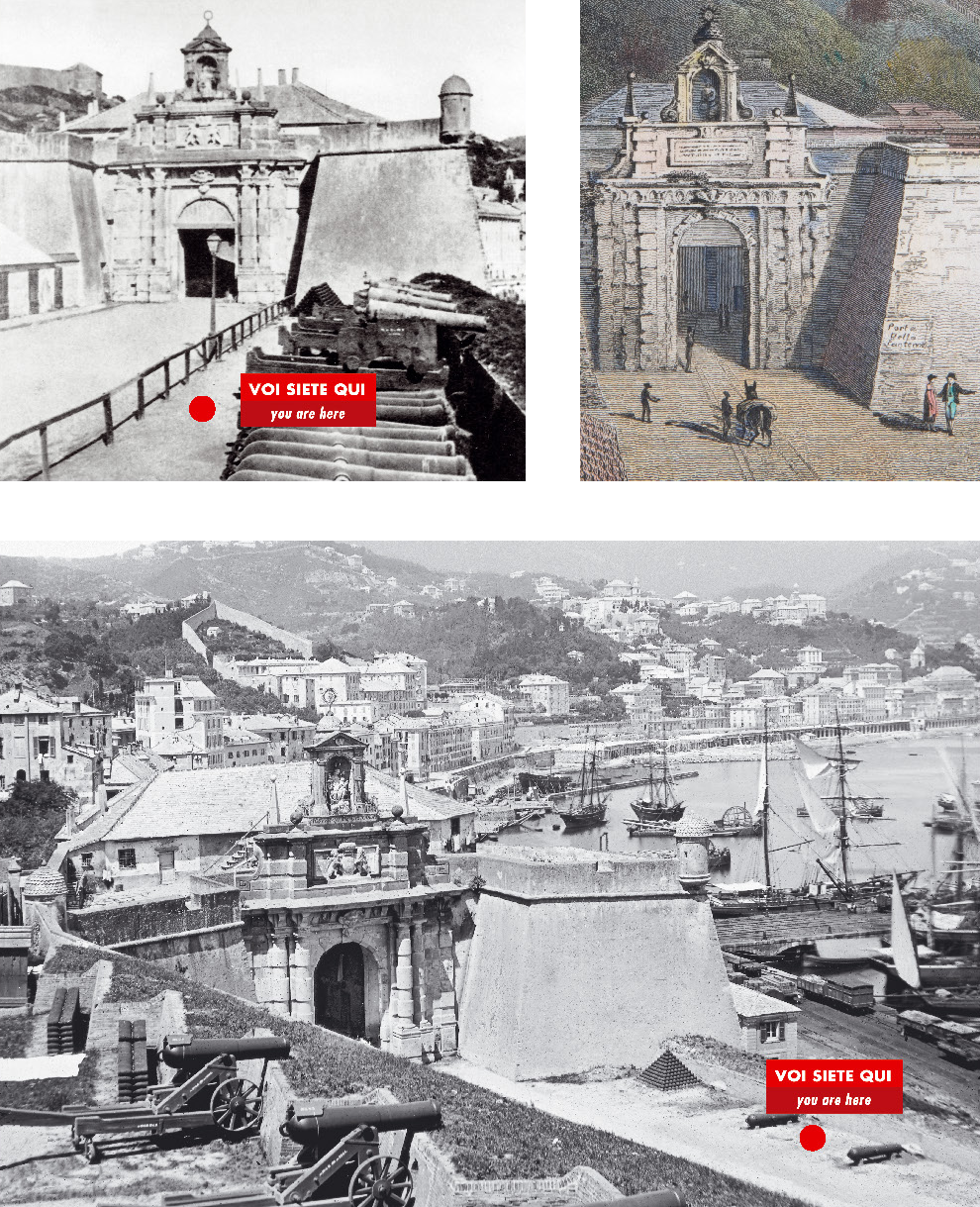Porta Vecchia
della Lanterna

Questa prima stazione marittima fu costruita tra il 1884 e i 1890: consisteva in un fabbricato a un piano in muratura con copertura di tegole e lucernai e una grande tettoia retrostante in ferro sostenuta da colonne // This first maritime station was built between 1884 and 1890: it consisted of a single-storey brick building with a tiled roof and skylights, and a large iron roof at the back supported by columns
Il bastione della Lanterna con le mura e le due porte in una planimetria degli anni ‘50 dell’Ottocento sovrapposta allo stato attuale dell’area in Google Maps // The lighthouse bastion with the walls and the two gates in a ground plan from the 1850s superimposed on the current view from Google Maps
Da qui si entrava in città
Prima del 1600, chi da ponente avesse voluto entrare a Genova doveva affrontare una strada tortuosa che arrivava al monastero di San Benigno (arroccato sul promontorio che da esso prendeva nome), per poi scendere verso il porto. Uno strapiombo faceva da separazione tra terra e mare, tanto che molti viaggiatori preferivano imbarcarsi a Sampierdarena e arrivare in città via mare. Nel 1630 venne finalmente realizzato un tracciato che dava accesso alla città mediante una porta, detta ‘della Lanterna’, inserita nelle mura di difesa, allora in costruzione. Noi ora ci troviamo esattamente sul piazzale dove era questa grande struttura monumentale.
Nel 1831 questo varco, insufficiente a gestire l’aumento dei passaggi, venne sostituito da una nuova porta a due varchi collocata più vicino alla Lanterna. La vecchia porta venne abbattuta nel 1877, mentre la nuova, resa inutile dopo i lavori di sbancamento dell’intero promontorio, nel 1935 venne smontata e rimontata solo nei suoi elementi di facciata su un muraglione ai piedi del faro.
The Old Gate known as ‘Porta della Lanterna’
This was once a gateway to the city
Before 1600, anyone wishing to enter Genoa from the West had to tackle a winding road leading all the way up to the monastery of San Benigno (perched on the promontory by the same name) and then back down to the port. A sheer cliff separated land and sea, so steep that many travellers preferred to reach Genoa by sea, embarking on a boat in Sampierdarena. In 1630, a new route was finally opened, providing access to the city through a gate known as ‘Porta della Lanterna’, which was part of the protective walls then under construction. You are now standing exactly on the square where this great monumental structure once stood.
In 1831, this gate, which had become insufficient to cope with the increase in traffic, was replaced by a new gate with not one but two passageways located closer to the lighthouse. The old gate was demolished in 1877, while the new one, now useless due to the excavation work carried out on the San Benigno promontory, was dismantled in 1935 and its façade reconstructed partially on one of the walls at the foot of the lighthouse.
